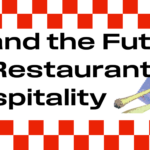Published by
In a digital first world, it’s going to take more than just a great experience to stand out. Rajesh Midha, President of Ogilvy Experience North America, and Steve Soechtig, Global CEO of Ogilvy Experience, explore the evolution of digital engagement and the inextricable link between a brand and an experience, including the impact created when the two are in sync.
The Maturity of Digital Engagement
As we rapidly approach the thirty-year anniversary of the commercial Internet, there’s no longer any debate as to whether the digital revolution has upended the traditional rules of brand activation and customer experience management. We have an entire generation of active market participants who are true digital natives, having been born into the digital world, and we have a global society that recognizes the intrinsic value of online interaction and research. The result of this is a permanent change in consumer behavior, which in turn has re-written the rules of Brand and Experience.
Historically, brands would follow the traditional AIDA funnel management model, with brand teams focusing on awareness and interest – the top- to mid-funnel activity – and experience teams concentrating on desire and action – the mid- to lower-funnel activity. Brand teams drove mass market appeal, broadcasting general value propositions to the market with equally broad market groups, while Experience teams used human-to-human interactions to tailor the message and solution to the individual’s wants and needs. It was an effective model that drove significant brand growth for many decades.
At first, the digital revolution slowly upended these standard brand management principles. Having a web presence (and, eventually, an app or social media community) gave the brand a market edge. Data was captured to form profiles and target ads to the individual, which guided the consumer to an online experience that was contextual, personalized, and frictionless. However, one principle remained somewhat constant: Brand teams focused on top- to mid-funnel awareness and interest – focusing on the click-through to the experience- and once awareness was built and the consumer clicked, the experience team took over and guided the customer towards specific products and services that ultimately led to transaction and payment.
More recently, we’ve seen the pace of change accelerate dramatically. The continued maturation of the digital consumer, combined together with the equal maturation of platforms and technology, have driven new behaviors in the market and changed the rules of the game.
Suddenly, consumers are taking control of their journey in new and unexpected ways, engaging with brands at different points in the decision process and following different paths to engagement and loyalty.
Brand and Experience – Two Sides of the Same Coin
This latest change reflects more than just a convergence of a process. It represents a fundamental shift in the expectation between the brand and the consumer. Whereas before the brand’s commitment was to provide value to the consumer through the product or service offered by the brand, the new expectation is that the brand will offer value through the experience itself. Experiences are now the brand and the brand is now the experience.
New business models have emerged to capture these trends, and existing brands are changing their approaches in recognition of this trend. Amazon’s brand promise of convenient, consistent, and rapid access to the world’s largest selection of products at the lowest prices is realized through its experience, whether that be the browser, the mobile application, or their ubiquitous voice assistant. Uber’s brand promise is a direct reference to its experience: “Tap a button, get a ride.” Under that is the implied value proposition that Uber will offer a simple and transparent ride scheduling experience regardless of where you are in the world. A more traditional brand, Sephora, offers a virtual mirror allowing consumers to explore products and colors on their face, while equally traditional Charles Schwab offers a range of calculators and simulators to support their investing and banking client’s financial decisioning.
The result of this shift is that experiences are no longer a reinforcement of the brand positioning, designed to capture interest and convert it into commitment. As Jay Patisall and Ted Schadler highlight this in their May 1, 2019 Forrester report Despearate For Differentiation: Creativity Galvanizes The Total Brand Experience, “Every engagement moment is now a brand experience. It’s not possible to separate brand communications from a brand’s digital or physical presence.” More and more, potential customers are engaging with brands through the experience, and often are discovering brands through the search for a specific experiential need, such as a financial calculator (“How much will my mortgage payment be?”), virtual shopping assistant (“What are the most flattering athletic tops for cycling class?”), or inquiry into options (“What urgent care clinics are open and available to evaluate my child’s sore throat?”). Decisions are being made based on the value that a brand is providing to meet the consumer’s immediate need and not exclusively based on the value of the product or service itself. Further, engagement progression is driven by continuous online value, such as the Urgent Care clinic offering telemedicine consultations or the financial institution offering online pre-qualification for a mortgage.
“The last best experience that anyone has anywhere becomes the minimum expectation for the experience they want everywhere”
That said, it’s important to recognize that the brand experience, in most cases, must extend beyond utility. It’s critical that experiences stimulate and shape an emotional response within the individual, whether that response be aligning core values, extending anticipation, resolving frustration, or calming anxiety. High res visualizations, carefully crafted content, and value-added personalization shape perceptions, invoke reactions, and drive production action that ultimately increase customer engagement and loyalty to the brand. Further, the expectation of a perfect, tailored experience continues to increase. IBM’s Bridget van Kranlingen was quoted in IBM’s Business Operational Blog (www.ibm.com/blogs, September 21, 2016) as saying that “The last best experience that anyone has anywhere becomes the minimum expectation for the experience they want everywhere”. This is even more true five years later. The bar is continuously rising, and capturing the individual’s attention and emotional connection becomes more difficult with every interaction.
Modern Brand and Experience Strategy – Adjusting to this New Normal
Obviously there is no single solution for brands as they respond to the continuously changing expectations of consumers, customers, and members. Every industry, market, and geography are unique and distinct, and each brand’s response must be equally unique. Fortunately, there are several steps that a brand can take to prepare the organization to capitalize on the opportunity that this shift presents to them in the market.
1. Adopt an Agile Mindset
The first, and perhaps most important, step is to recognize that the only constant today is change. The consumer’s perceptions, needs, and responses are continuously evolving, as highlighted above, and distinguishing the brand will require continuous reaction, response, and adjustment. As soon as a new experience is introduced into the market it’s already dated by design, and the window of opportunity to capture attention is closing. The team needs to focus on the next innovation, the next approach, and the next piece of content that will capture the evolving need.
Embracing an Agile mindset requires more than continuous effort. It also requires that brands embrace speed over perfection, allowing new elements to be introduced and accepting that not all introductions will meet expectations – the consumer mindset is moving too quickly to allow brands the benefit of time. As long as the experience does not generate a negative emotional response, it will not generate negative returns. Experiment and push the boundaries of comfort in order to distinguish the brand from the sea of sameness.
2. Listen to the Market
Now more than ever, it’s critical that brands engage in real-time discussions with their customers, members, and prospects. While not a new concept – brands have engaged focus groups for decades – new digital techniques offer new and distinct opportunities for engagement, including e-mail dialogue, social communities, and web surveys. Building this feedback loop, and engaging in continuous discussion, will offer valuable insights that will shape experience strategies and approaches.
Further, the experiences themselves will communicate key insights to the organization. Consumers will “speak with their fingers and with their mouse”, and activity metrics across the experiences, such as visit rates, view rates, time on page metrics, and conversion / abandonment metrics will identify what is working and where there are opportunities for improvement.
Finally, listen to the competition. Leaders will celebrate and highlight their successes, which are often founded on experience improvements. There is no harm in being a fast follower, particularly if that meets the existing expectation of the market, but fast following alone is not a strategy. Continuously monitor what the competition is bringing to the market, and consider steps that the brand can take to eclipse those improvements and capture the hearts and minds of the consumer.
3. Invest in Data and Analytics capability
The foundation of any great experience is built on data and measurement. Encourage both visitors and customers to provide information that will return value through personalization and manage the security of that information with strict protocols, technologies, and governance. Combine that data with activity metrics to drive insights and identify opportunities.
Data and analytics become the foundation upon which great experiences are built. Leverage the Agile Mindset to create dynamic views into the data that drive real-time decisioning and adjustments at a micro-market level, and run real-time tests that can be measured to refine every interaction.
4. Don’t Forget to Innovate
Building on the above, it’s critical that brands think outside of the normal. Incremental improvements are valuable, but capturing the attention of the market, and distinguishing the brand, will require true innovation. It’s not enough to build a faster horse – the brand must think about a new way of engaging the consumer and creating that emotional connection that will drive positive action.
The anchor point for productive innovation is intrinsic value. A key question that the experience team should ask with every innovation idea is what value does it provide the individual engaging with the experience – reducing time, providing greater insight, creating novel visualizations, etc. If that value is clear, then pursue the innovation idea and, per the Agile Mindset, don’t be afraid to miss expectations.
Ogilvy Experience has worked with many of the world’s largest and most iconic brands to define and execute experience strategies designed to positively impact key business KPIs, from top line growth to total customer value to measured loyalty. Please visit www.ogilvyexperience.com for more information on the services that Ogilvy Experience provides in support of global brands.
This article was originally published on OgilvyExperience.com




